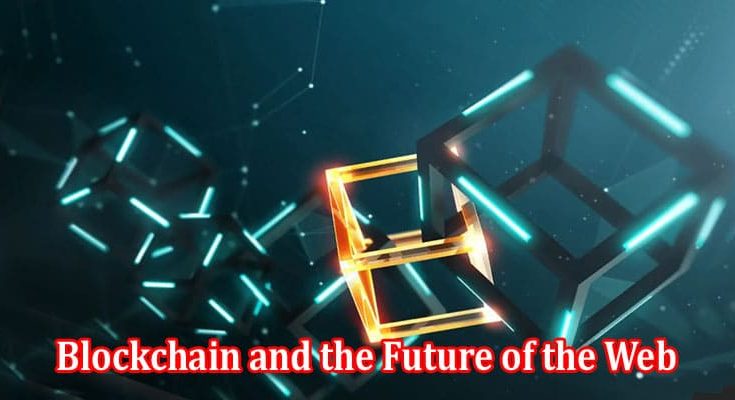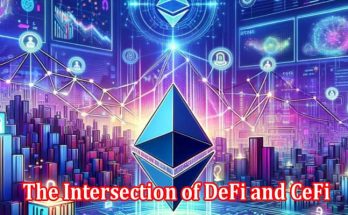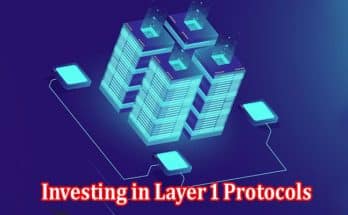Introduction
In a world marked by rapid technological advancements, the emergence of blockchain technology and its revolutionary application has opened up new avenues for reshaping the way we interact with the internet. This innovative combination is not only transforming the financial sector but is also poised to redefine the very foundations of the web as we know it, amplifying its capabilities. At the forefront of this transformation is the seamless integration of blockchain, and the web, presenting opportunities that were once thought to be in the realm of science fiction. As this amalgamation gains momentum through initiatives, the future of the web seems to be intrinsically intertwined with the unprecedented potential of blockchain technology. Start your trading journey by using a reputable trading platform such as Astral Edge.
Unveiling the Blockchain Revolution
Blockchain, often associated with cryptocurrencies like Bitcoin and Ethereum, is a decentralized digital ledger that securely records transactions across multiple computers. Its transparency, immutability, and decentralized nature have captured the imagination of innovators and entrepreneurs across various industries, and now, it’s gradually making its way into the fabric of the web. Traditional systems of record-keeping and data management have often faced issues of trust, security, and interoperability. Blockchain, on the other hand, provides an elegant solution by creating a tamper-proof, decentralized, and verifiable record of transactions.
Web 3.0: A New Dawn
The evolution of the web can be classified into phases – Web 1.0, which introduced static web pages, and Web 2.0, characterized by user-generated content and interactivity. Now, the integration of blockchain technology heralds the advent of Web 3.0, often referred to as the “Decentralized Web.” This new phase envisions a web where users have greater control over their data, digital identities are self-sovereign, and interactions are direct and peer-to-peer. With blockchain’s cryptographic security and smart contract capabilities, trust is embedded into every layer of online interactions, reducing the need for intermediaries.
Enhancing Data Security and Privacy
In the age of data breaches and privacy concerns, the marriage of blockchain and the web brings a ray of hope. Traditional web platforms often collect and store user data in centralized servers, making them susceptible to attacks and unauthorized access. Blockchain, however, disperses data across a network of nodes, ensuring that no single point of failure exists. Users retain ownership of their data, and permissions are granted on a need-to-know basis. This paradigm shift in data management could potentially mitigate many of the privacy issues that plague the current web landscape.
Smart Contracts: The Building Blocks
At the heart of the blockchain-web integration are smart contracts, self-executing contracts with the terms of the agreement directly written into code. These digital agreements automatically execute when predetermined conditions are met, eliminating the need for intermediaries and reducing the risk of disputes. From decentralized applications (DApps) to supply chain management and beyond, smart contracts have the potential to streamline and automate various processes, making them more efficient, transparent, and cost-effective.
Revolutionizing Digital Identity
In the traditional web ecosystem, digital identities are often fragmented across various platforms, leading to identity theft and authentication challenges. Blockchain introduces the concept of self-sovereign identities, where users have complete control over their personal information. This not only enhances security but also simplifies the login process across different websites and services. Users can grant permission for specific attributes without revealing their entire identity, empowering them to navigate the web with greater control.
The Rise of Decentralized Applications (DApps)
Decentralized applications, or DApps, are a prime example of how blockchain is reshaping the web experience. Unlike traditional apps that are controlled by a single entity, DApps operate on decentralized networks, ensuring transparency and minimizing censorship. These applications span various sectors, from finance and gaming to social networking and supply chain management. The potential of DApps is vast, as they have the ability to redefine business models and democratize access to services.
Challenges on the Horizon
While the fusion of blockchain and the web holds immense promise, it’s not without challenges. Scalability, energy consumption, and regulatory concerns are some of the hurdles that need to be addressed for this vision to fully materialize. Blockchain networks like Bitcoin and Ethereum have faced scalability issues, leading to slow transaction speeds and high fees during peak times. Additionally, the energy-intensive consensus mechanisms of certain blockchains have raised environmental concerns, prompting the search for more sustainable alternatives.
Paving the Way for the Future
As blockchain technology matures and evolves, it continues to inspire innovation across industries. The future of the web lies in harnessing the potential of blockchain to create a more transparent, secure, and user-centric online ecosystem. With the rise of Web 3.0, users can expect greater control over their data, reduced dependence on intermediaries, and enhanced digital interactions. Blockchain and the web are converging to shape an internet that aligns with the original ideals of a decentralized and open network, promising a future where the possibilities are limited only by our imagination. In this evolving landscape, platforms are emblematic of the seamless integration of blockchain into everyday life, offering users an opportunity to engage with the world of online trading through a secure and efficient interface. As blockchain continues to weave itself into the fabric of the web, such platforms exemplify the innovation and potential that lies at the intersection of these two transformative technologies.
Conclusion
In the realm where blockchain technology converges with the web, a new horizon of possibilities emerges. The integration of blockchain’s decentralized, transparent, and secure nature into the digital fabric of the internet brings forth a future that holds the potential for a more democratic and equitable online experience. With Web 3.0 on the horizon, users can look forward to regaining control over their data, enjoying increased security, and participating in direct, peer-to-peer interactions. Blockchain’s ability to redefine digital identity, streamline processes through smart contracts, and usher in the era of decentralized applications marks a turning point in the evolution of the web. The challenges that accompany this transformation, from scalability concerns to environmental impacts, serve as reminders of the journey ahead. However, the progress already achieved and the innovations emerging on platforms stand as a testament to the tangible benefits of embracing blockchain technology within the web ecosystem.

Caroline is a dedicated writer with a passion for keeping readers informed. Specializing in providing the latest news updates and unbiased reviews, she strives to deliver accurate and insightful content. With a keen eye for detail and a commitment to journalistic integrity, Caroline ensures that her readers are always well-informed. Stay tuned for her latest articles to stay up-to-date on current events and trends.




